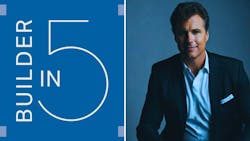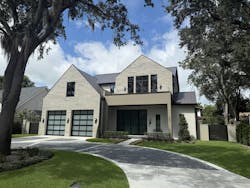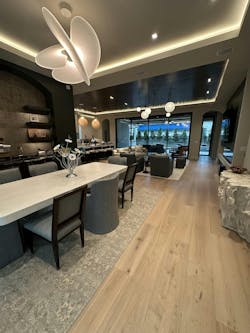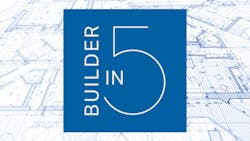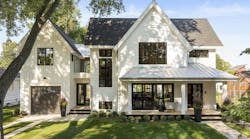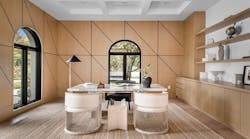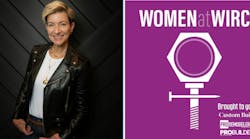Builder in 5: The Spec Home Strategy That Broke Metro Orlando's Price Record
Builder in 5 is our five-question series with the minds behind standout custom homes.
Up next: Clay Wooten, president of Wooten Built in Winter Park, Fla. He builds fully customized luxury residences priced from $2 million to $6 million, including a spec home that sold this spring for $4.6 million, a record breaker for metro Orlando. (Read more on the home here)
1. Your recent spec home set a record for the highest price per square foot for a non-waterfront property in Orlando. What led you to move forward on the project, and what lessons can other builders and designers take from it?
Clay Wooten: Winter Park is a niche market for single-family luxury residences. Although interest rates have risen and some housing markets have softened, there is still demand in Winter Park because there is no land left, new homes are constructed after old dwellings are demolished on lots, and prices there have been rising since 2012 both for land and home values.
I’ve been able to check all the boxes of what Winter Park homebuyers want: to be near Park Avenue dining and shopping, to be on a quiet street, and to be near other beautiful, high-priced homes.
Unlike a lot of houses in this high-end market, for this spec home I also added some higher-quality finishes, such as 10-foot doors on the first floor, tongue-in-groove ceilings, cove lighting and LED lighting throughout, an elevator, multiple fireplaces, and highly attractive elevations. This helped me capture the highest per-square-foot price for a non-waterfront home in the Metro Orlando market. (Read more about the home)
2. You help clients build homes with future marketability in mind. How do you balance their personal vision with designs that protect resale value?
Wooten: There are several areas where clients’ personal preferences can come into conflict with future marketability. I try to show them that using square footage for very specific purposes—for example, a specific room for their pets—can be challenging for any other future use. In this instance, I’ll try to show that it should be designed so that it could be a pantry later.
Other areas where future marketability could conflict are if kitchen cabinets, staircases, or tile work in bathrooms are very high priced, and a future buyer might want to change them.
The ratio of bedrooms to public rooms could present another marketability problem. It’s a delicate balance because you don’t want to insult clients’ choices, but you know they should consider the amount of time that they expect to live in the home in order to get the most value from the design.
3. With your background as a developer, what practices or ways of thinking can you suggest that custom builders or designers adopt to make smarter, strategic decisions on their own projects?
Wooten: A mistake that I’ve seen is when builders build spec homes in markets they are unfamiliar with. Market values change from street to street, and often on different sections of the same street as well. A development mistake or a construction mistake can happen if there is not a thorough understanding of the market.
Another significant mistake is to spend either not enough money on the home project, which causes it to be seen as a cheaper house in an exclusive home market, or to spend too much money, which results in the builder not making the current profit margin.
Also, getting too caught up in your own personal tastes for a house versus what your target market wants can be ultimately self-defeating.
4. Given the current market uncertainty, where are you comfortable taking risks right now, and what informs those decisions?
Wooten: Those decisions are created by the Winter Park market in which I build. Demand for custom luxury homes remains very strong in Winter Park because there is no vacant land on which to build, and as a developer I’m able to purchase desirable lots, demolish existing homes on them, and build a new custom home that is in a location luxury homebuyers want to live in. These factors have continued to drive up prices for both land and homes in Winter Park, despite rising interest rates and slumping home markets elsewhere.
5. Looking back on your career, what's one decision you’ve made that defines how you build?
Wooten: To never have my homes look production-built, but for them to always be unique. I explore what the competition presents, and it’s usually very similar, based on costs and design. I like to create unique, desirable designs and I work closely with architects and designers to make sure each home has its own kind of beauty.I spend more than many builders on basic construction materials, such as waterproofing, and I like to be creative with colors and finishes.
The payoff for this approach has been excellent. Many of my spec homes have sold before I finished them or before I broke ground on them. And the house that sold this spring at the highest price per square foot for a non-waterfront home in metro Orlando was sold when it was off-market.
For more insights from the field, read our earlier Builder in 5 interviews, and reach out with suggestions on who we should interview next.
